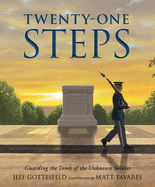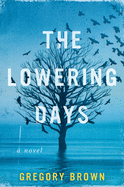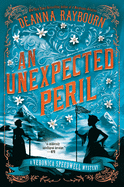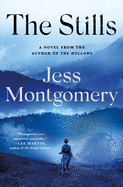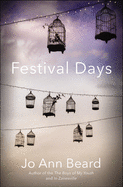Tuesday, March 16, 2021
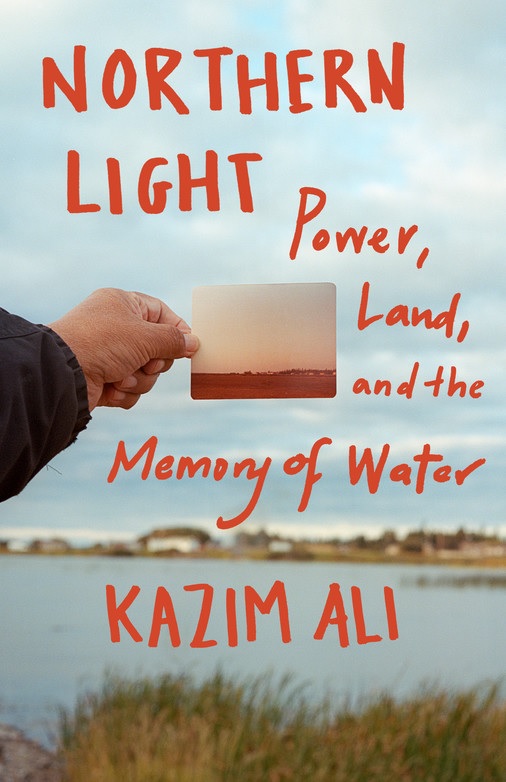 In Northern Light: Power, Land, and the Memory of Water, Kazim Ali meditates on the power of place and land, what it means to belong and what it means to remember. Part of that remembering is tied up in his shock on learning that the small town in northern Canada in which he spent formative years of his childhood no longer exists. Despite the lack of physical structures to memorialize the place, however, Ali finds himself "awash in remembrance" on visiting, which left me ruminating on the connection between place and memory long after I turned the last pages of Ali's powerful memoir.
In Northern Light: Power, Land, and the Memory of Water, Kazim Ali meditates on the power of place and land, what it means to belong and what it means to remember. Part of that remembering is tied up in his shock on learning that the small town in northern Canada in which he spent formative years of his childhood no longer exists. Despite the lack of physical structures to memorialize the place, however, Ali finds himself "awash in remembrance" on visiting, which left me ruminating on the connection between place and memory long after I turned the last pages of Ali's powerful memoir.
 That connection between place and memory lies at the heart of Marked, Unmarked, Remembered, in which brothers Andrew and Alex Lichtenstein memorialize the physical locations of traumas throughout U.S. history. Essays and photographs reveal the ways in which these physical locations have been preserved (or not) and how that preservation (or lack thereof) has shifted our present-day understanding of past events.
That connection between place and memory lies at the heart of Marked, Unmarked, Remembered, in which brothers Andrew and Alex Lichtenstein memorialize the physical locations of traumas throughout U.S. history. Essays and photographs reveal the ways in which these physical locations have been preserved (or not) and how that preservation (or lack thereof) has shifted our present-day understanding of past events.
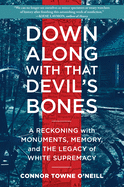 This understanding, it seems, is the crux of the argument for the removal of statues of Confederate Army generals across the U.S., a theme central to Connor Towne O'Neill's Down Along with that Devil's Bones: A Reckoning with Monuments, Memory, and the Legacy of White Supremacy. O'Neill unpacks the many-layered history of physical memorials to Nathan Bedford Forrest, Confederate Army general, avowed white supremacist and first Grand Wizard of the Ku Klux Klan.
This understanding, it seems, is the crux of the argument for the removal of statues of Confederate Army generals across the U.S., a theme central to Connor Towne O'Neill's Down Along with that Devil's Bones: A Reckoning with Monuments, Memory, and the Legacy of White Supremacy. O'Neill unpacks the many-layered history of physical memorials to Nathan Bedford Forrest, Confederate Army general, avowed white supremacist and first Grand Wizard of the Ku Klux Klan.
On the website for the National Memorial for Peace and Justice, the Equal Justice Initiative (founded by Just Mercy author Bryan Stevenson) states that "markers and monuments can help transform our national landscape into a more honest reflection of the history of America"--a sentiment reflected back on the pages of each of these incredible books on memory and memorialization. --Kerry McHugh, blogger at Entomology of a Bookworm
Vera
by Carol Edgarian
"For fifteen years I'd been waiting for a catastrophe greater than my birth. The quake gave it to me." In Carol Edgarian's riveting third novel (following Three Stages of Amazement), Vera narrates the story of the life she carves from the rubble of San Francisco's historic 1906 earthquake.
The San Andreas fault shifted just days after Vera's 15th birthday, but her life had never been stable. Her mother, Rose, the city's most notorious madam, paid a foster mother for Vera's care and scheduled only perfunctory visits. It seemed logical, in the pre-dawn hours after the quake hit, for Vera to flee her crumbled foster home and the approaching fires, and to lead her foster sister to Rose's Pacific Heights home, "five stories and a riot of gables and fancywork." Rose isn't there, but tenacious Vera becomes vital in a network of "fellow scrappers" living in and around "the gold house."
Among a strong-willed cast of real and fictional characters--including the legendary socialite Alma Spreckels and Mayor Eugene Schmitz--Vera forges an alliance with Tan, Rose's housekeeper and formerly Vera's nemesis, who must evade soldiers corralling Chinatown residents. Vera finds Rose in a makeshift hospital and brings her home; women who'd worked in the brothel move in, too, and Vera is soon managing a disparate community of 11. Poverty stalks the homeless camps; crime and graft--sometimes key to survival--are rampant. Edgarian's gritty yet hopeful historical novel doesn't gloss over the countless tragedies rising like the smoke and dust in the 500 devastated city blocks, but Vera personifies the pluck that revived San Francisco, her "temblor-riven paradise." --Cheryl McKeon, Book House of Stuyvesant Plaza, Albany, N.Y.
Discover: As narrated by a plucky 15-year-old survivor, this riveting historical novel recounts the aftermath of the devastating 1906 San Francisco earthquake in vivid detail.
The Twilight Zone
by Nona Fernández, transl. by Natasha Wimmer
In The Twilight Zone, Nona Fernández (Space Invaders) uses her considerable empathetic power as a novelist to penetrate the darkest corners of Chile under Pinochet's dictatorship. Fernández blends historical facts and seemingly autobiographical details with what can only be imagined, reconstructing not only the inner lives of people tortured and "disappeared" by the regime's security apparatus, but that of one of the torturers. The chief figure in Fernández's book is the very real Andrés Antonio Valenzuela Morales, who in 1984 confessed shocking secrets that were eventually published under the headline "I TORTURED PEOPLE." Fernández uses Morales as a starting point to explore "the machinery of evil," a "parallel and invisible universe" of medieval torture and arbitrary executions.
The Twilight Zone sets out to answer questions that are unanswerable, questions separate from the thuggish reasoning behind Pinochet's reign of terror. Instead, many of the questions Fernández seeks to answer are about memory, collective trauma and denial. She refers to the world of interrogation cells and electric shocks as "the dark side," a "secret dimension" or "the Twilight Zone." Just as the television show depicted a secret world, "a universe unfolding outside the ordinary," so did Chileans occasionally catch glimpses of the grim secret world just under the surface of ordinary life.
Fernández musters her courage and empathetic imagination to stare into the Twilight Zone, to look deep into a secret world that many would prefer to ignore or forget. The Twilight Zone is a frank look into a nation's subconscious and the dark dreams that haunt victims and perpetrators alike. --Hank Stephenson, the Sun magazine, manuscript reader
Discover: The Twilight Zone is a wide-ranging, empathetic novel that doubles as a heartrending inquiry into the scars left in the Chilean psyche by Pinochet's dictatorship.
The Lowering Days
by Gregory Brown
In 1980s rural Maine, Indigenous 14-year-old Molly and her father live off the land along the Penobscot Bay that was stolen from their ancestors. An overseas conglomerate tries to open a factory that would bring jobs to the area but pollute the environment. Molly burns down the building, sends a statement to the press and escapes into the woods. Molly's statement gets published in the Lowering Days newspaper, sowing division within the community and a violent clash between families in this achingly beautiful and bittersweet family saga.
The first op-ed Falon Ames publishes, defending Molly's reasons for burning down the factory, brings death threats to the tiny newspaper's office. Falon is unapologetic about the uproar, causing financial troubles for her husband Arnaud's struggling boat-building business. Locals vilify Falon, until Lyman Creel, local fisherman and next-door neighbor to the Ames family, shoots at a starving Molly when he catches her tampering with his lobster traps, causing community anger to shift toward Lyman and his family. Lyman demands that Falon publish his version of events. When Falon refuses, Lyman's actions escalate tensions that lead to devastating results for stubborn, good people who can't help hurting each other over misperceptions of a shared and deeply wounding past.
Gregory Brown's protagonist-narrator, David "Almy" Ames, claims his mother, Falon, named her newspaper the Lowering Days after her great-grandfather's term for lowering a body into the earth at funerals. He also recalls her saying the name refers to boats being birthed into the sea. The author poetically blends the opposing concepts into an absorbing, elemental story of human existence. --Paul Dinh-McCrillis, freelance reviewer
Discover: In a bittersweet saga set in rural Maine, two respected families clash over old hurts when an Indigenous girl burns down the polluting factory that sustains their struggling community.
Mystery & Thriller
An Unexpected Peril
by Deanna Raybourn
All future explorers should look to stubborn, intelligent Veronica Speedwell for inspiration. In An Unexpected Peril, Deanna Raybourn's sixth adventure starring the Victorian lepidopterist, Veronica is at her old tricks again: unable to overlook a potential crime. Veronica is a newly minted member of the Curiosity Club, a London club for female thinkers. She and Revelstoke "Stoker" Templeton-Vane (her partner in both natural historical research and more personal matters) have been asked to combine their talents to create a memorial display to honor Alice Baker-Greene, a pioneering Alpinist, who recently died while hiking in Alpenwald. Veronica is convinced that Alice was actually murdered, but Stoker pleads with Veronica not to get involved.
When Princess Gisela of Alpenwald pays a visit to the Curiosity Club to see the display and declares firmly that Alice's death was an accident, Veronica is put on her mettle. Especially when Princess Gisela mysteriously vanishes, and the Alpenwald dignitaries ask for Veronica and Stoker's aid. Alpenwald has been caught up in the rising tension between France and Germany, and an important treaty is on the line.
Funny and insightful, An Unexpected Peril shows off Veronica at her majestic, slightly self-centered best. Unwilling to bow to the mores of the day, Veronica leads Stoker along on her many adventures, which will keep readers guessing until the very last page. Alpenwald may be a fictional kingdom, but Raybourn (A Murderous Relation; A Treacherous Curse) expertly weaves real-life European politics and mountain climbing strategies of the era into her work, creating a delectably entertaining mystery. --Jessica Howard, bookseller at Bookmans, Tucson, Ariz.
Discover: In this charming historical mystery, an intrepid Victorian natural historian turns her substantial intellect to solving a murder.
The Stills
by Jess Montgomery
The economics and emotional effects of Prohibition on a rural area make for a rousing plot in The Stills, Jess Montgomery's third novel set in the stark Appalachian coal-mining Bronwyn County, Ohio. In cities, Prohibition breeds organized crime, but, in hardscrabble rural areas, the needs are more basic: earn money to feed a family, pay for a child's expensive medicines, escape soul-crushing poverty.
Sheriff Lily Ross is expected to enforce the Volstead Act, which, in 1927, is in its seventh year, yet "so filled with loopholes that it was flimsier than worn-out washrags." She sometimes ignores the stills in the county's "hills and hollers" unless "a moonshiner raises too much of a ruckus, or someone--usually a frustrated wife--complains." But things change when a 12-year-old boy, hired to protect a still, nearly dies from tainted moonshine. Meanwhile, Fiona Vogel returns to her hometown with her powerful husband, George, and his several violent henchmen. George plans to start a bootlegging operation selling toxic wood alcohol to force out competitors.
The Stills richly delves into class differences, religious obsession, greed and Prohibition's failures. Montgomery (The Hollows) forcefully shows Lily's struggles in an occupation unheard of for a woman during the 1920s while caring for her family on a modest salary. Lily, based on Maude Collins, Ohio's first female sheriff, inherited the job from her late husband, but has earned the community's respect. While Fiona seems, at first, to be superficially concerned with money and finery, she shows an inner strength and a savvy business acumen. Montgomery's strong storytelling shines in The Stills. --Oline H. Cogdill, freelance reviewer
Discover: A meticulous historical mystery set during 1927 examines the effects of Prohibition in a harshly stark southern Ohio coal-mining county.
Romance
Act Your Age, Eve Brown
by Talia Hibbert
In Act Your Age, Eve Brown, the sparkling conclusion to the Brown Sisters series (Get a Life, Chloe Brown; Take a Hint, Dani Brown), Talia Hibbert introduces the third Brown sister. Eve is the youngest, and feels the least accomplished. While both of her older sisters have successful careers, Eve has given up on every job she's ever tried. When her latest career endeavor, wedding planning, ruins the bride's day, her parents draw the line--it's time to pay rent and find a stable job. An impromptu drive takes her to the quaint British town of Skybriar, and one awkward interview and a car accident later, Eve has a job as the new chef at a bed and breakfast. The b&b's owner, Jacob Wayne, is unimpressed by Eve's constant singing and seemingly unorganized lifestyle but can't deny the friendliness and skill she brings to the job. As snarky Eve and grumpy Jacob work and bicker together at the b&b, their attraction grows.
Hibbert brings her signature humor and warmth to Eve's and Jacob's stories. Eve recognizes the privilege she has within her wealthy Black family, but still feels hurt because her parents seemingly don't believe in her. Jacob believes in Eve and allows her to find her way personally and professionally while working at his b&b. Jacob is also open about his autism and the ableism he has encountered in his career and home life, and Hibbert writes his darkest moments with hope and healing. --Amy Dittmeier, librarian
Discover: Eve discovers that growing up doesn't mean you have to act like an adult in this cozy romantic comedy that can be read as a standalone to the series.
Biography & Memoir
Festival Days
by Jo Ann Beard
It's been more than 20 years since the publication of Jo Ann Beard's collection of personal essays, The Boys of My Youth, one that included the classic "The Fourth State of Matter," the terrifying account of a mass shooting at her University of Iowa workplace. In Festival Days, Beard returns with a set of nine diverse pieces that sometimes challenge the boundary between fiction and nonfiction but that are consistent in the intensity of their perception and their vivid prose.
Most prominent in this genre-bending category is "Cheri," the story of the title character's two-and-a-half-year battle with metastatic breast cancer. Beginning as a deeply reported piece of personal journalism, it shifts almost imperceptibly into the territory of the imagination, without sacrificing any of its integrity purely for emotional effect. "Werner," which describes the artist Werner Hoeflich's escape from a deadly fire at his Upper East Side apartment building in 1991, relies heavily on its subject's recollections of his near-death experience, but Beard's keen eye for novelistic detail subtly transforms pure fact into art.
"The Tomb of Wrestling," a short story that displays Beard's talent as a fiction writer, is no less intense. In it, an artist named Joan engages in a life and death struggle with a man who invades her upstate New York home.
On whichever side of the fact/fiction line, which for her is sometimes "permeable," Jo Ann Beard's stories fall, they undeniably resonate with the feeling of truth. --Harvey Freedenberg, freelance reviewer
Discover: Vital and diverse, Jo Ann Beard's nine pieces in this second collection are an intriguing blend of fact and fiction.
My Inner Sky: On Embracing Day, Night, and All the Times in Between
by Mari Andrew
Mari Andrew (Am I There Yet?) doesn't care for "emotional binaries: the idea that you're either happy or sad, positive or negative." Through encouraging essays and vibrant watercolor-and-handwriting illustrations, she posits that our cultural obsession with staying positive and choosing happiness is failing us, preventing humanity at large to recognize the beauty in trials, challenges, frustrations and even failures. "I want the full menu," Andrew writes in the introduction to My Inner Sky, "everything available to me in this life: dark, bright, purply-pink weird twilight color, and golden."
A list of things that make New York magical; paralysis in a Spanish hospital; what French winemaking can teach us about creativity; a dance party on the streets of Rio; a flight full of paper hearts on the way to her father's funeral. These moments make up not just Andrew's book, but her life, moments in which she finds lessons on beauty and awareness, hope and reflection, healing and humanity. She recalls her disappointment in those who failed "to engage in the world as sensuously as I hope" as she urges readers not to fail in the same spectacular way. The world, she writes, is full of "people with whom I have very little in common, except my entire humanity." How could one read such a sentiment and not see their own connection to humanity? This is the gift that My Inner Sky offers readers, a much-needed balm against the disconnection we hear so often lamented, a reminder that magic is all around us, if only we remember to notice it. --Kerry McHugh, blogger at Entomology of a Bookworm
Discover: Hand-drawn and watercolor illustrations accompany each essay in this collection that encourages readers to find--and notice--healing magic in everyday life.
Social Science
The World in a Selfie: An Inquiry into the Tourist Age
by Marco D'Eramo, transl. by Bethan Bowett-Jones and David Broder
Marco D'Eramo's thought-provoking The World in a Selfie: An Inquiry into the Tourist Age, translated from Italian by Bethan Bowett-Jones and David Broder, is a thorough and often critical look at modern tourism through a variety of sociological lenses. Rather than being a "postmodern frill... the truth is that tourism is the most important industry of the century," explains D'Eramo, an Italian journalist and social theorist. He creates a salon-like atmosphere of noted thinkers and writers, synthesizing hundreds of years of thought about interpreting the world through travel.
The economic impact of tourism is the crucial consideration for D'Eramo, weaving through topics and across chapters. "It would be difficult to overestimate tourism's impact on individual national economies," he explains. The global pandemic of 2020 brought this into stark relief as, when cities shut down, it "proved the centrality of tourism through tourism's omission."
D'Eramo expresses dismay at the current state of "hit and run" tourism and doesn't hide his consternation about the increasing "theatricality" of cities across the world, like Rome, that rely on tourism to balance budgets. He concludes that tourism in the future will most likely be different. "We live in a world where the three spatial dimensions have shrunk, but at the same time we have developed other dimensions in which to move," he says, nodding to a "multidimensionalism" made possible by digital media. This is an intriguing book for sociologists and economists, as well as for serious travelers wishing to understand their impact as they once again move about the globe. --Cindy Pauldine, bookseller, the river's end bookstore, Oswego, N.Y.
Discover: The impact of modern tourism on global economic, political and social interests is examined in this challenging and thought-provoking work.
The Babysitter: My Summers with a Serial Killer
by Liza Rodman and Jennifer Jordan
It was 2005 when Liza Rodman finally recognized the unidentifiable man from her recurring nightmares: Tony Costa, a local who often watched Liza and her sister during their summers in Provincetown, Mass. Liza's mother, a young divorcée, spent "most of her free time closing down the various bars and dance clubs with her own revolving door of suitors." She was cruel to Liza, who found solace hanging out with Tony, handyman at their motel and "one of the few kind and gentle adults in [her] life during those turbulent years." Rodman was 10 in 1969, when Tony disappeared. She never knew why, but was about to find out.
When asked what she remembered about Tony, Rodman's mother calmly replied, "I remember he turned out to be a serial killer." A shocked Rodman attempted to confirm they were speaking about the same man and her mother clarified: "Oh, for Christ's sake... don't be so dramatic. He wasn't your babysitter.... He was the handyman." Particularly telling of Rodman's sorrowful childhood: "Yeah, so what.... He didn't kill you, did he?"
A half century after Costa brutally killed several young women (when 1960s free love and ubiquitous runaways made "disappearing" someone seemingly easy), Rodman teams up with author friend Jennifer Jordan for The Babysitter. A haunting account--part memoir, part investigative journalism--of Rodman's childhood and its chilling connection with the Cape Cod Killer, The Babysitter is the astounding story of a vulnerable young girl and the consolation she found with a man who preyed on women. --Lauren O'Brien of Malcolm Avenue Review
Discover: This enthralling memoir deftly intertwines the stormy childhood of one of the authors and the life and brutal acts of the serial killer who often watched over her.
Children's & Young Adult
Twenty-One Steps: Guarding the Tomb of the Unknown Soldier
by Jeff Gottesfeld, illus. by Matt Tavares
An elite army team of "men and women of every race, religion, and creed" take pride in guarding the Tomb of the Unknown Soldier in Arlington National Cemetery in northern Virginia. Their actions, dress and dedication pay tribute to those who were lost in war and couldn't be identified. In this stunning, solemn and reverent picture book, Jeff Gottesfeld (No Steps Behind) and Matt Tavares (A Ben of All Trades) collaborate both to educate readers and honor those sentinels who proudly walk the mat day and night, good weather or foul, ensuring the Unknown Soldier is never alone.
Gottesfeld's words take on the pace of his subjects--slow, steady, consistent: "Twenty-one footsteps./ Click./ Twenty-one seconds of silence./ Click." Reinforcing this measured pace is a somber tone that explains the history of the Tomb and reflects the weight of the matter and the dignity of the soldiers. Tavares's strikingly lifelike mixed-media art reflects the mood through dark colors, changing perspectives and a point of view that never flinches; his use of light and shadow reminds readers of both the dark and the light in art and in life. It's Gottesfeld's choice of narrators, though, that gives Twenty-One Steps its potency: "I am an Unknown. I am one of many.... we gave all we had for our country and freedom. The Tomb Guards give all they have for us." Gottesfeld's text is a heartfelt thank-you letter delivered from one soldier to another.
A perfect introduction for young readers to a significant part of United States history, Twenty-One Steps is a serene education about and commendation of the exceptional men and women who proudly protect this symbol of U.S. freedom--and the high cost the nation pays for that freedom. A beautiful reminder and a fitting tribute. --Jen Forbus, freelancer
Discover: Those who guard the Tomb of the Unknown Soldier are honored in this monumental picture book.
Mole in a Black & White Hole
by Tereza Sediva
Among books dedicated to encouraging children to explore the wonders of the world, Tereza Sediva's Mole in a Black & White Hole distinguishes itself with its bravura art. Also setting the title apart: there's probably no other picture book with the same theme in which the case for adventure is made by a turnip.
Mole lives under the ground, and he likes it that way: "It was dark and it was damp but it was his home." He has built-in company in the form of "a bright pink chandelier"--actually, a turnip that grows through Mole's ceiling. The turnip/chandelier's color--a rarity in Mole's black-and-white world--is enough to make him wonder "if there might be more out there if he looked." But Mole is scared to leave his home, so it's up to the turnip to convince him to peek outside. Mole is a hard sell, though. It's only when his pink friend goes missing, which creates a hole in Mole's ceiling, that he is forced literally to see the light.
Mole in a Black & White Hole succeeds as both a parable and an art object. The pictures in Czech author/illustrator Sediva's debut abound with mottled surfaces and clearly defined edges, calling to mind natty woodcuts. Nearly every page is a stunner, whether it shows Mole's color-deficient home or the color-decked glory of outdoor sights. Aqua, lime, mustard and reddish pink dominate the palette, and their interplay and overlap can transform even a garment hanging on a clothesline into something worthy of being framed. --Nell Beram, freelance writer and YA author
Discover: In this radiant picture book, a mole who lives underground in a black-and-white home has to be convinced that there's a world out there in living color.




